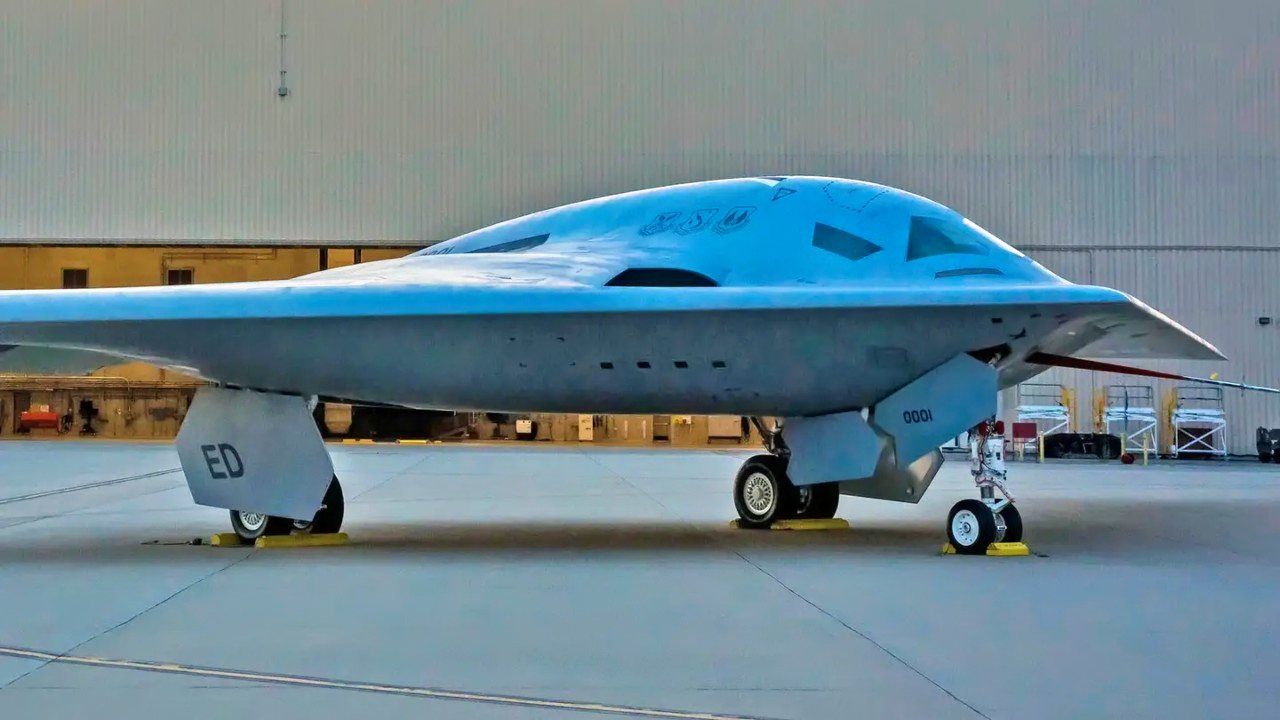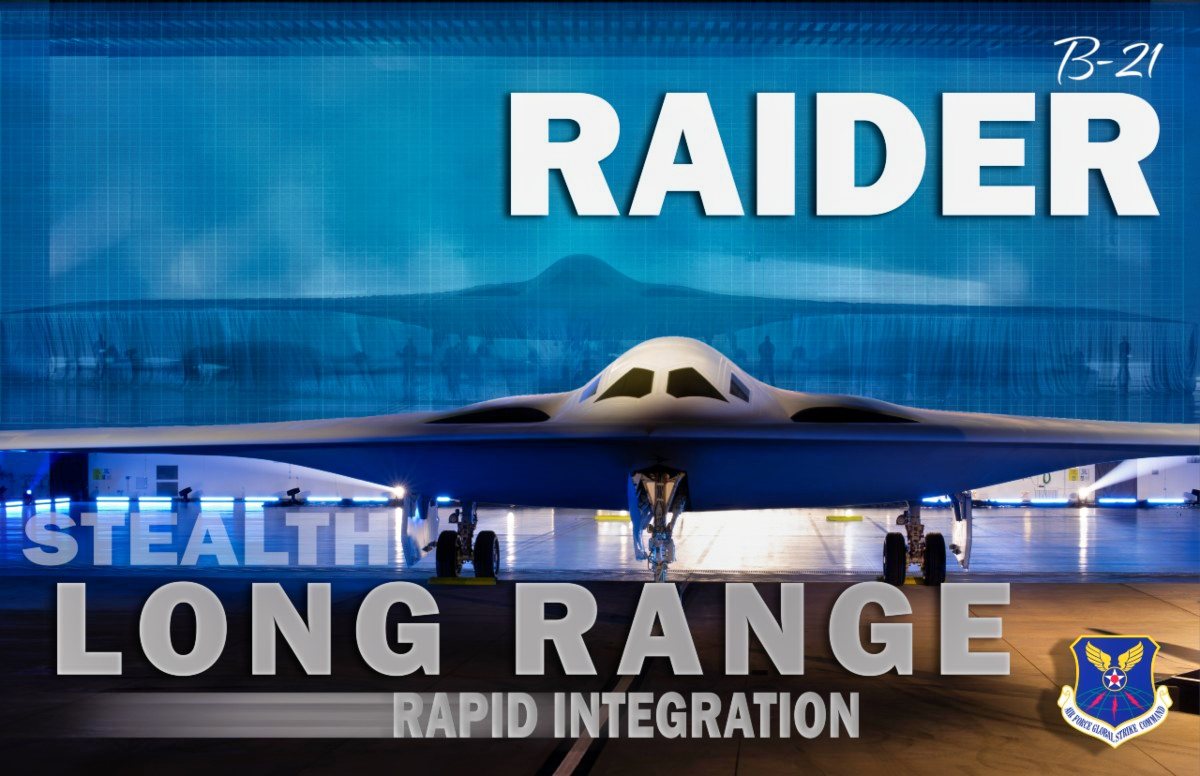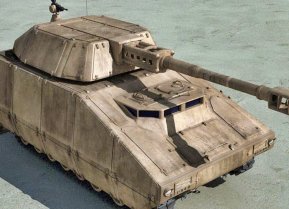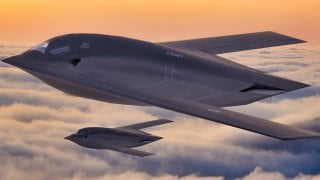The B-21 Raider Question the U.S. Air Force Needs to Ask
Manned aircraft are still relevant. And with the onset of the B-21, manned aircraft should continue to be relevant. But automation and artificial intelligence are coming, and will one day encroach upon the pilot’s job security.
B-21 Raider - The Last Manned Bomber for the U.S. Air Force? Automation and artificial intelligence are rapidly transforming various industries, including prestigious fields such as medicine, law, and aviation. Concerns are growing that this technological advancement could displace many workers, prompting political responses like Andrew Yang's advocacy for universal basic income. In the military sector, automation is already impacting roles such as pilots, with drones and AI-backed systems becoming more prevalent. Elon Musk predicts a future dominated by autonomous drone warfare, though manned aircraft like the B-21 Raider remain relevant for now. The transition to automated aircraft will be gradual, influenced by technological advancements and ethical considerations.

B-21 Raider: The Last of the Manned Military Aircraft
Automation and artificial intelligence are most assuredly coming. Amazon is experimenting with humanoid robots in their warehouses. Customer service positions have been outsourced to automated AI chatbots. Tesla sells a self-driving car. Doomsayers are projecting that the continued creep of automation will erode the fabric of our entire economic system, creating a class of people who are out of work because, simply, their jobs no longer exist. Andrew Yang has crafted a political career out of automation-related doomsaying, offering an automation-countering remedy: the universal basic income. More politicians will follow, especially as more jobs disappear.
A Changing World...and U.S. Air Force?
But automation job creep is not just a working-class issue. It won’t concern only the Amazon warehouse workers, or the customer service teleworkers. Relatively prestigious, high-trained jobs will also be at risk eventually.
Doctors? An automated, AI-backed system will one day be able to make a medical diagnosis, or move with the fine motor skills necessary to perform surgery.
Lawyers? An automated, AI-backed system will be able to craft and articulate a compelling legal argument, harvested from complex and turgid research.
And pilots? The pilot position is already being modified (sometimes to accommodate automation). First, the pilot, in some cases, is being removed from the cockpit, to operate the airframe remotely (i.e., a Predator drone, or a remotely piloted, experimental F-16). Second, some aviation systems are already automated (i.e., autopilot, or the ill-fated MCAS system which plagued Boeing’s 737 Max). And, in other cases, airframes (mostly small drones) are operating with entirely autonomous systems. One can expect that in the medium-term future, automated, AI-backed systems will fly military planes (passenger planes are less likely to adopt automated systems as most passengers are not going to feel comfortable flying in a fully automated plane).
“The fighter jet era has passed,” Elon Musk declared in 2020. “Locally autonomous drone warfare is where the future will be. I can’t believe I’m saying this, because this is dangerous, but it’s simply what will occur.”
I don’t think the fighter jet era has passed – but it does seem to be passing.
The future of aerial warfare will likely be, in large part, automated. Which begs the questions: will upcoming manned aircraft like the B-21 Raider be amongst the last of the manned aircraft?
B-21: A Dying Breed?
The transition to automated aircraft will take time. And most countries are not going to be in the position, any time soon, to create and field an automated aircraft.
The proliferation of automated aircraft will depend upon the willingness of advanced-tech countries like the US and China to disseminate their technology. However, the US and China will compete to field automated aircraft. In fact, the US’s Net Generation Air Defense (NGAD) project will rely heavily upon automated components. The center of the NGAD program will be a sixth-generation fighter jet, known as the Penetrating Counter-Air (PCA), which will function as something of a successor to the F-22 Raptor.
The PCA will potentially feature a manned and unmanned piloting option, harkening things to come. But more significantly, the NGAD program will pair the PCA with an uncrewed drone, known as the collaborative combat aircraft (CCA). Two CCA’s will accompany each PCA, an arrangement that will significantly increase the relevance of automated weapons in military aviation – and perhaps signal a new phase in a gradual transition to automated airframes.

Still, the ongoing production of airframes like the B-21 suggest the end of manned airframes has not yet arrived.
“Advocates for unmanned and autonomous systems have trumpeted the end of manned aircraft for more than a decade,” Air and Space Magazine reported, “even as the Air Force has brought online its newest – and some suggest last – manned fighter jet, the F-35, which will remain a centerpiece of its combat aviation forces for the foreseeable future.” Yet, “Air Force leaders argue it is more beneficial to keep a person in the cockpit because the algorithms that would let an aircraft think on its own aren’t sufficiently mature yet – not to mention the ethical dilemmas that come with waging war without a human present.”
As Doug Birkey, executive director of AFA’s Mitchell Institute for Aerospace Studies, put it: “qualified fighter pilots must be able to master highly aggressive, three-dimensional maneuvering at rates exceeding twice the speed of sound in a highly dynamic battlespace, operate highly sophisticated mission equipment, and face adversaries doing everything in their power to kill them. The distant promise of autonomy must not be confused with meeting the clear and present threats of today and tomorrow.”
Indeed, manned aircraft are still relevant. And with the onset of the B-21, manned aircraft should continue to be relevant. But automation and artificial intelligence are coming, and will one day encroach upon the pilot’s job security.
About the Author: Harrison Kass
Harrison Kass is a defense and national security writer with over 1,000 total pieces on issues involving global affairs. An attorney, pilot, guitarist, and minor pro hockey player, Harrison joined the US Air Force as a Pilot Trainee but was medically discharged. Harrison holds a BA from Lake Forest College, a JD from the University of Oregon, and an MA from New York University. Harrison listens to Dokken.
All images are from Shutterstock.


